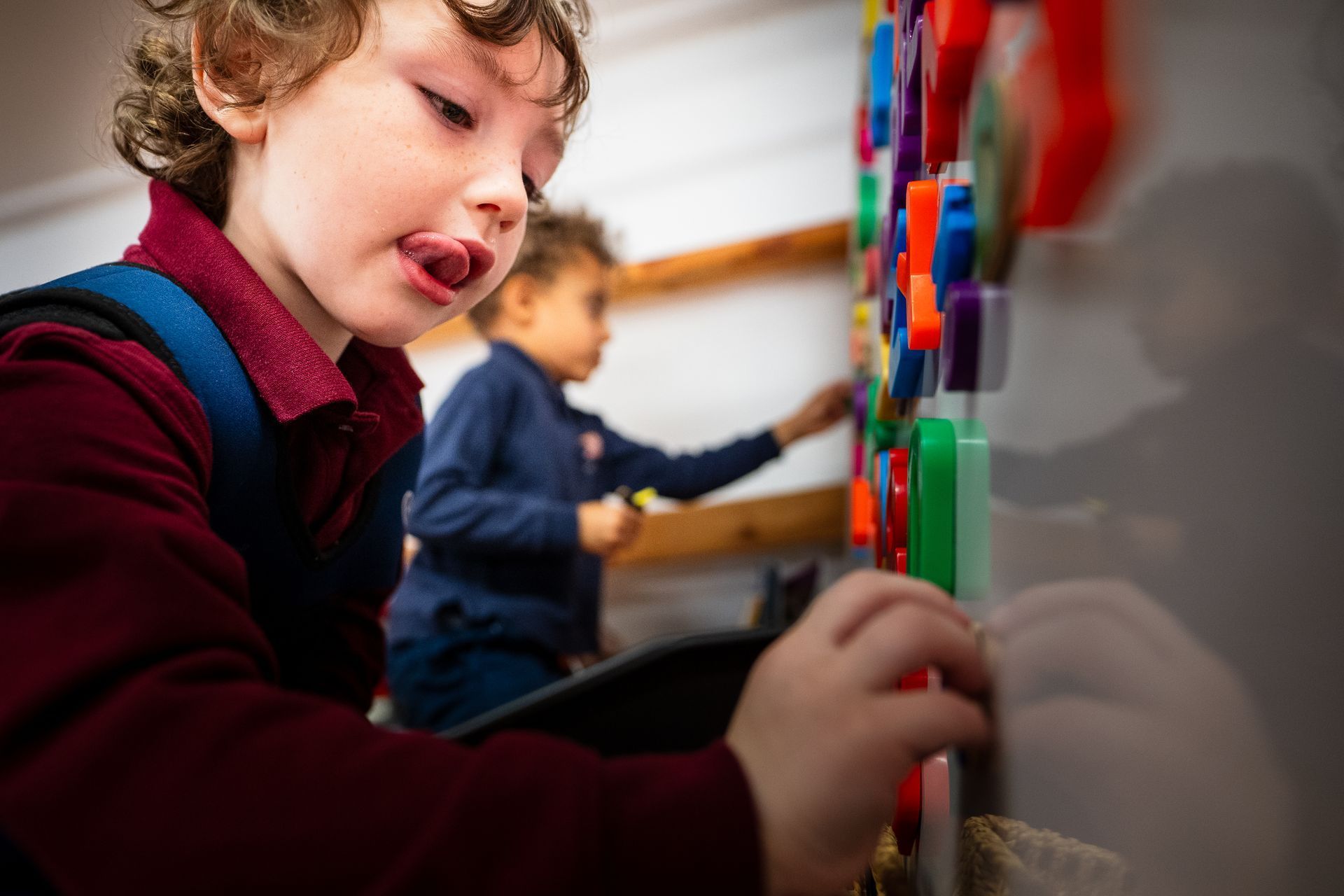Asking Vs. Telling
Are You Asking or Telling? The Key to Empowering Your Child

As parents, it’s easy to fall into the habit of being “tellers” when guiding our children. Whether it’s the daily requests to “put on your coat and shoes” or reminders to “finish your homework,” it feels efficient to simply tell our kids what to do. However, while this method might get quick results, it doesn’t foster the long-term skills and independence that we ultimately want for our children. Through positive discipline training, we learn that what we’re really aiming for is not just compliance in the moment, but the ability to help our children think critically, solve problems, and make decisions on their own.
Why Shifting from Telling to Asking Matters
When we constantly tell our children what to do, we miss out on opportunities to build their capacity to think for themselves and learn life skills that will serve them well in the future. The goal of shifting from "telling" to "asking" is not about losing control but about giving children the chance to develop autonomy and become active participants in their own lives.
Using questions instead of commands shifts the focus from the task to the child’s ability to reason and problem-solve. This approach encourages children to actively think, which leads to a deeper understanding of their responsibilities and improves their ability to make decisions. In the short term, it may feel slower or more complicated than just giving a directive, but over time, it helps children gain confidence in their ability to handle challenges and develop the internal motivation to take action on their own.
How to Use Curiosity Questions Effectively
The key to asking effectively is asking the right questions. Curiosity-based questions don’t demand immediate answers, but instead, invite children to think through the steps themselves. These types of questions encourage children to engage with the task and feel more empowered in their own decision-making.
Examples of Curiosity Questions
- Instead of saying, "What are you going to do about that?" try:
"What do you think you can do to solve this problem?"
This encourages problem-solving and critical thinking, allowing your child to figure out a solution on their own rather than simply being told what to do. - Instead of telling your child, "You need to clean your room," try:
"What needs to happen for your room to be cleaned by dinner time?"
This empowers your child to think about the task at hand and break it down into manageable steps, fostering responsibility. - Instead of simply saying, "It's time to go," try:
"How much time do you need to get ready? What will you need to do before we leave?"
This allows your child to become more aware of time and take responsibility for their own preparation.
By using curiosity questions, you’re not only helping your child think for themselves, but you’re also giving them a sense of control over their decisions, which can increase their self-esteem and motivation.
The Importance of Respectful Communication
It’s important to note that while curiosity questions are powerful, the tone in which they’re asked matters. Questions should always be respectful, encouraging, and non-patronizing. Avoid questions that might sound sarcastic or critical, such as:
- "You don’t know? How many times have I told you, and you still don’t know?"
- "Why can’t you just do what I ask?"
Such questions can make children feel incompetent or criticized, which can create resistance and lower their confidence. Instead, maintain a tone of curiosity and support, showing that you believe in their ability to figure things out.
How to Start Flexing Your Asking Muscle
One of the best ways to start incorporating more asking into your parenting style is by noticing your patterns of communication. Over the next week, pay attention to how often you tell your child what to do versus asking them questions. You might be surprised by how frequently you default to telling, especially in moments of rush or stress.
Tips for Transitioning from Telling to Asking
- Start with small shifts: Begin with less demanding tasks where asking questions can feel more natural, like "What do you need to do to get ready for bed?"
- Reflect on your own habits: Check how often you’re telling instead of asking and challenge yourself to change your approach during key moments.
- Be patient: Transitioning from telling to asking takes time and effort, but the rewards of building your child’s independence will be well worth it.
The goal isn’t to never tell your child what to do (there are times when direct instructions are necessary), but rather to be more mindful of when you can ask instead. Challenge yourself to ask questions that promote reflection and critical thinking, even if it takes a little longer than simply giving an order.
Start with small shifts and gradually introduce more asking into your daily routine. You’ll likely notice positive changes not only in your child’s behavior but also in their growing independence and sense of responsibility. By giving your child the opportunity to think, plan, and problem-solve, you are teaching them essential life skills that will benefit them far beyond the present moment.
In Conclusion: The Benefits of Asking Over Telling
Making the shift from "telling" to "asking" is one of the most effective ways to promote independence, critical thinking, and problem-solving skills in your child. It allows them to take ownership of their actions and helps them feel capable and confident in their decision-making. As you practice asking more than telling, you’ll create a more collaborative, empowering environment at home where both you and your child are more mindful, thoughtful, and connected.
As you reflect on your own communication style, remember that this shift doesn’t happen overnight. Be patient with yourself and your child as you practice asking instead of telling, and celebrate the small victories that come along the way. The results may surprise you, and your child’s growing capacity for self-sufficiency and problem-solving will be well worth the effort.
By incorporating these small changes into your daily communication with your child, you’re not just helping them get through the day — you’re fostering lifelong skills that will serve them well in their personal and academic lives.










